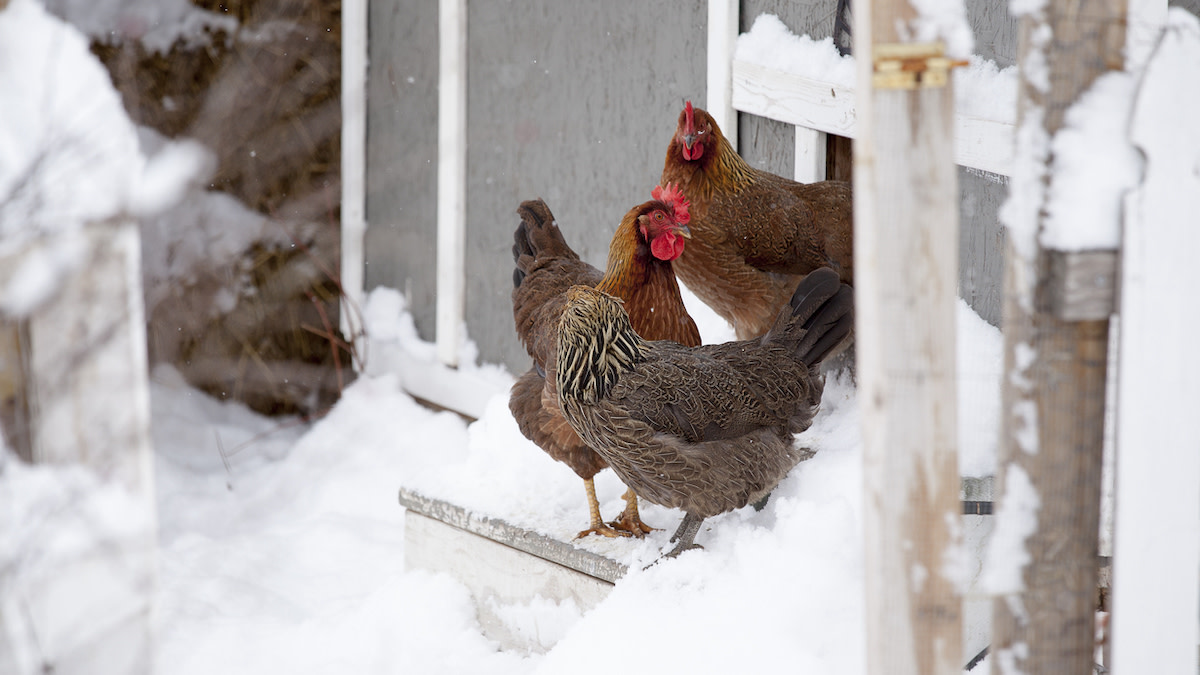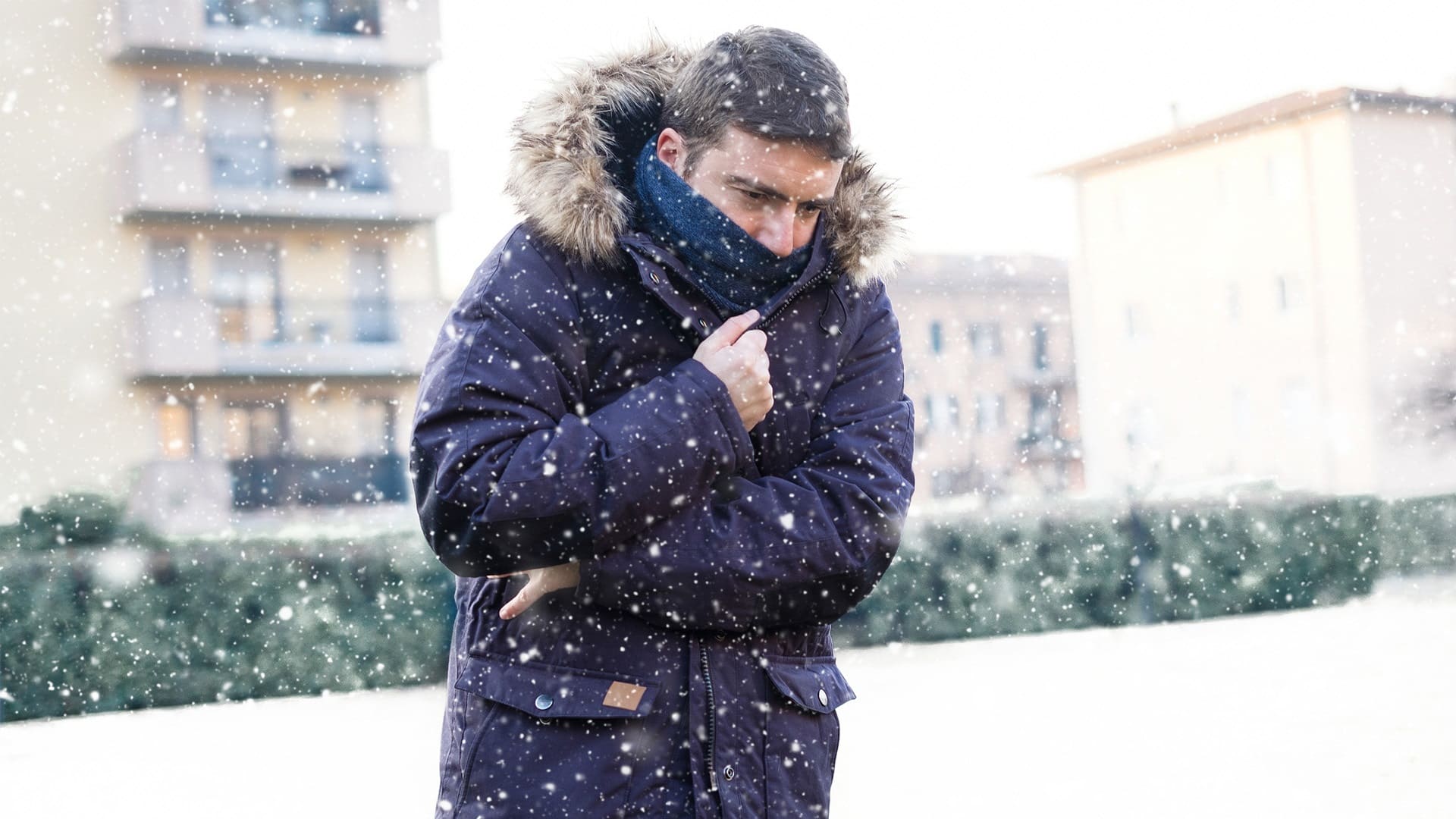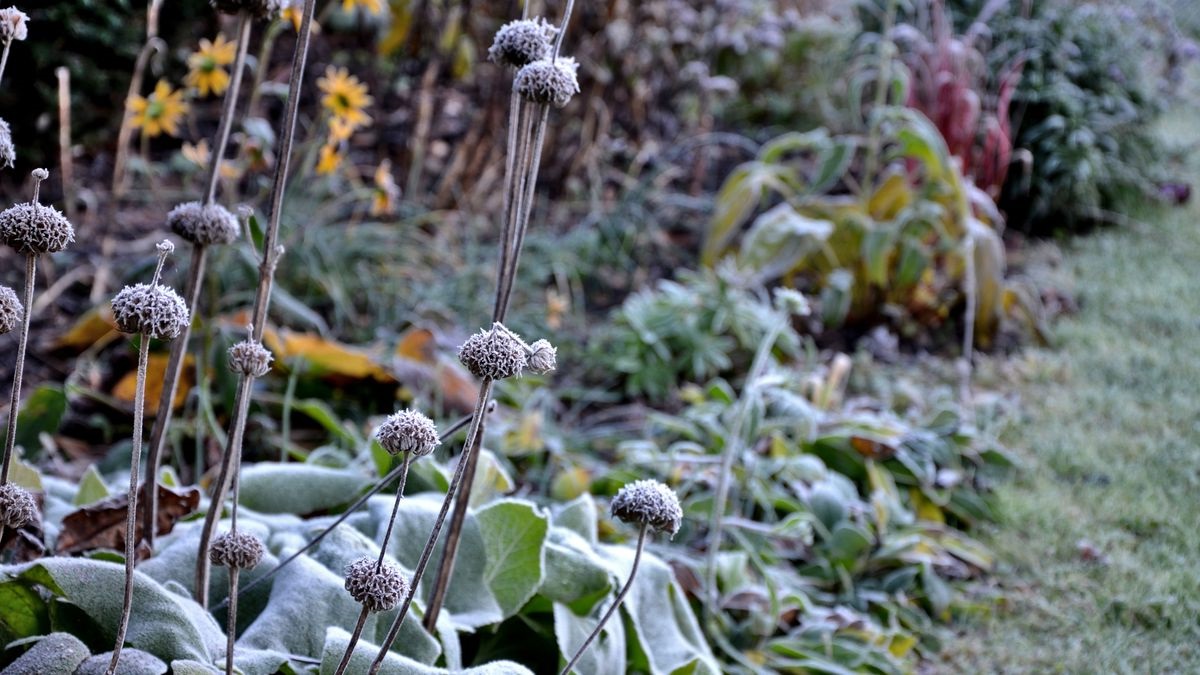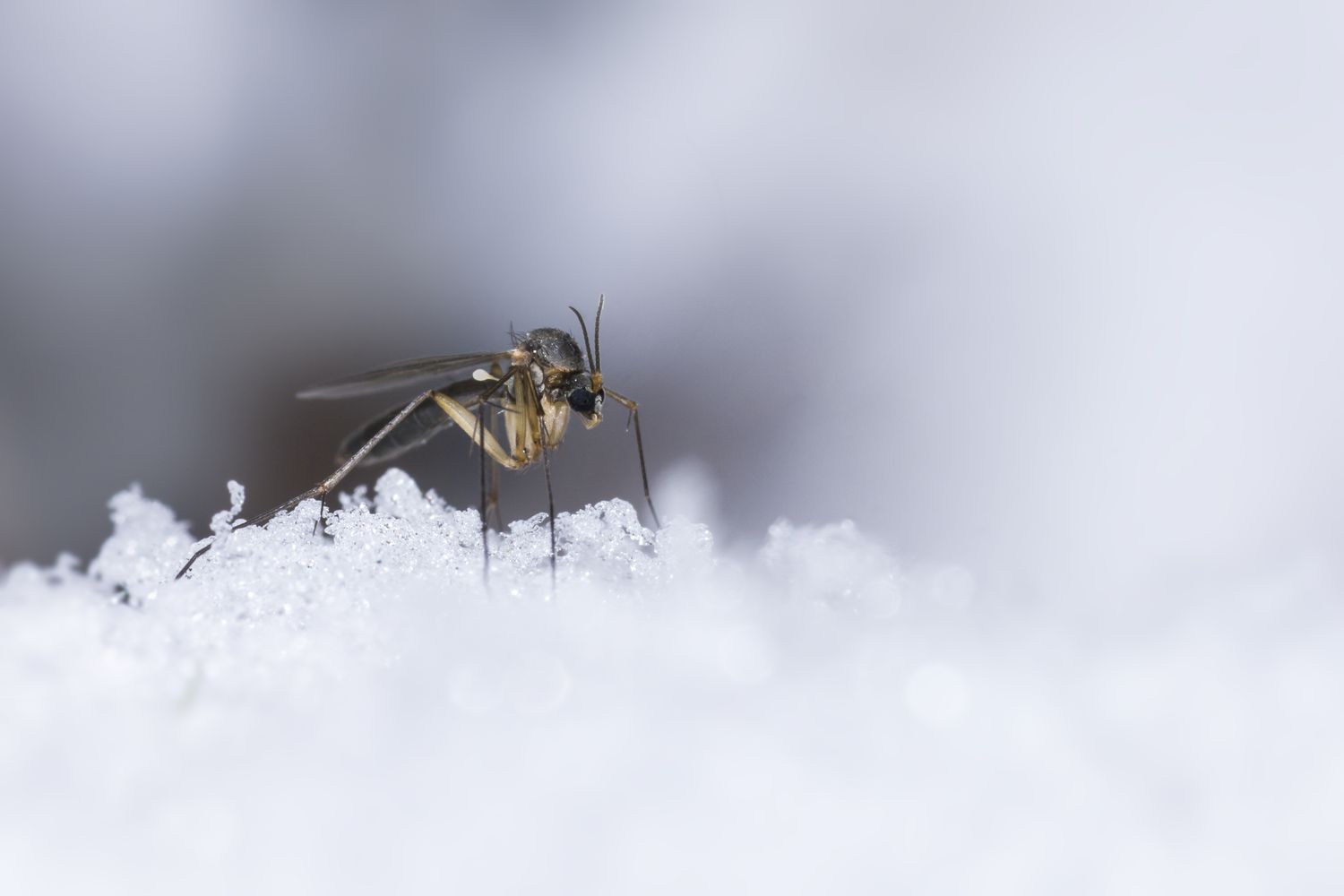Home>Science & Environment>Tips For Keeping Chickens Warm During Winter Months


Science & Environment
Tips For Keeping Chickens Warm During Winter Months
Published: February 19, 2024
Learn effective strategies for keeping your chickens warm and healthy during the winter months. Discover science-based tips for creating a comfortable environment in your coop.
(Many of the links in this article redirect to a specific reviewed product. Your purchase of these products through affiliate links helps to generate commission for Temperatures.com, at no extra cost. Learn more)
Table of Contents
Importance of Keeping Chickens Warm
Ensuring that chickens are kept warm during the winter months is crucial for their health and well-being. Chickens, like many other animals, are sensitive to extreme temperatures, especially cold weather. Maintaining a warm environment for chickens is essential for several reasons:
-
Health and Comfort: Just like humans, chickens can suffer from the effects of cold weather. Exposure to low temperatures can lead to stress, decreased egg production, and even illness. By keeping chickens warm, their overall health and comfort are prioritized, leading to happier and more productive birds.
-
Egg Production: Cold temperatures can significantly impact egg production in chickens. When hens are exposed to cold environments, they may reduce their egg-laying or stop altogether. By providing a warm and cozy shelter, chickens are more likely to continue laying eggs consistently throughout the winter months.
-
Preventing Frostbite: Chickens are susceptible to frostbite, particularly on their combs, wattles, and feet. Frostbite can cause pain and discomfort for the birds and may lead to long-term health issues. Keeping chickens warm helps prevent the risk of frostbite, ensuring their well-being and minimizing potential health complications.
-
Overall Well-being: A warm and comfortable environment contributes to the overall well-being of chickens. It reduces stress, promotes healthy behavior, and supports their natural physiological functions. By prioritizing their warmth, chickens are better equipped to thrive even during the coldest months of the year.
In essence, the importance of keeping chickens warm during winter cannot be overstated. It directly impacts their health, productivity, and overall quality of life. By understanding the significance of warmth for chickens, poultry keepers can take proactive measures to ensure that their feathered friends remain happy, healthy, and content throughout the winter season.
Providing Adequate Shelter
Providing adequate shelter for chickens during the winter months is essential for safeguarding them against the harsh elements. A well-designed coop serves as a protective haven, shielding the birds from cold winds, precipitation, and low temperatures. Here are key considerations for ensuring chickens have a suitable shelter:
-
Size and Structure: The coop should offer ample space for the flock to move around comfortably. Overcrowding can lead to stress and may compromise the chickens' ability to generate and retain body heat. Additionally, the structure should be sturdy and well-insulated to minimize heat loss and prevent drafts.
-
Orientation and Ventilation: Positioning the coop to receive maximum sunlight exposure can help naturally warm the interior during the day. Adequate ventilation is crucial to prevent moisture buildup, which can contribute to dampness and cold. However, it's important to strike a balance between ventilation and heat retention to create a cozy environment.
-
Protection from Predators: While focusing on warmth, it's equally important to ensure that the shelter provides security from potential predators. Sturdy locks, predator-proof mesh, and reinforced walls and flooring can help safeguard the chickens from harm.
-
Accessibility: The shelter should be easily accessible for regular cleaning, maintenance, and egg collection. This ensures that the chickens' living space remains hygienic and conducive to their well-being.
By prioritizing these aspects when providing shelter for chickens, poultry keepers can create a safe and comfortable environment that supports the birds' warmth and overall welfare during the winter season.
Insulating the Coop
Insulating the chicken coop is a fundamental aspect of ensuring that the birds remain warm and protected from the chilling effects of winter. Proper insulation helps to maintain a stable and comfortable temperature within the coop, shielding the chickens from the harsh outdoor conditions. Here are essential considerations for effectively insulating the coop:
Assessing the Coop's Current Insulation
Before implementing additional insulation, it's crucial to assess the existing insulation within the coop. Check for any gaps, cracks, or areas where cold air may seep in. Addressing these issues is the first step in creating a well-insulated environment for the chickens.
Choosing Suitable Insulation Materials
Selecting the right insulation materials is key to effectively retaining heat within the coop. Common options include fiberglass insulation, foam boards, and reflective insulation. These materials provide thermal resistance, helping to trap heat inside the coop while preventing cold air from permeating the walls.
Installing Insulation in Key Areas
Focus on insulating key areas within the coop, such as the walls, ceiling, and flooring. Applying insulation to these surfaces helps create a barrier against external cold temperatures, maintaining a cozy environment for the chickens. Additionally, insulating the nesting boxes provides extra warmth for the hens during egg-laying.
Sealing Gaps and Drafts
Sealing any gaps, cracks, or drafty areas within the coop is essential for maximizing the effectiveness of insulation. Use caulking or weather-stripping to seal gaps around windows, doors, and vents. This prevents heat loss and ensures that the coop remains well-protected from cold drafts.
Monitoring Moisture Levels
While insulating the coop, it's important to monitor moisture levels to prevent condensation buildup. Excessive moisture can compromise the insulation's effectiveness and create a damp environment, which is detrimental to the chickens' health. Proper ventilation and moisture control measures should be in place to maintain a dry and comfortable coop.
By meticulously insulating the coop and addressing potential areas of heat loss, poultry keepers can create a warm and secure environment that promotes the well-being of their feathered companions throughout the winter months. Effective insulation contributes to maintaining optimal temperatures within the coop, ensuring that the chickens remain healthy, productive, and comfortable despite the chilly weather outside.
Using Heat Lamps or Heaters
During the winter months, providing supplemental heat through the use of heat lamps or heaters can be a crucial component of keeping chickens warm and comfortable. These heating devices serve as valuable tools for maintaining an optimal temperature within the coop, especially during periods of extreme cold. When incorporating heat lamps or heaters, several important factors should be considered to ensure the safety and well-being of the chickens.
Selecting Appropriate Heating Equipment
Choosing the right heat lamps or heaters is essential for effectively warming the chicken coop. It's important to select equipment specifically designed for agricultural or poultry use, as these devices are equipped with safety features tailored to the needs of chickens. Additionally, opt for heating equipment that is durable, weather-resistant, and suitable for the size of the coop.
Placement and Safety Measures
Proper placement of heat lamps or heaters is critical to prevent accidents and ensure the well-being of the chickens. Install the heating devices in a secure and stable manner, ensuring that they are positioned away from any flammable materials such as bedding, straw, or wood shavings. Additionally, use sturdy fixtures and hangers to securely suspend the heat lamps, minimizing the risk of accidental falls or contact with the chickens.
Monitoring and Regulation
Regular monitoring of the temperature within the coop is essential when using heat lamps or heaters. Invest in a reliable thermometer to gauge the temperature accurately and make adjustments to the heating equipment as needed. It's important to maintain a consistent temperature that is neither too hot nor too cold for the chickens, as drastic fluctuations can cause stress and discomfort.
Backup Power and Emergency Preparedness
In the event of power outages or malfunctions, having a backup power source or alternative heating methods is crucial to ensure that the chickens remain warm and protected. Consider investing in battery-powered heat lamps or alternative heating devices that can be activated during emergencies. Additionally, have a contingency plan in place to address unforeseen circumstances and swiftly address any heating-related issues.
Consideration for Brooding Chicks
For poultry keepers raising chicks during the winter, providing supplemental heat is particularly important. Heat lamps or brooder heaters can create a warm and nurturing environment for young chicks, supporting their growth and development during the colder months. Ensuring that the brooding area is adequately heated helps safeguard the chicks from temperature-related stress and promotes their overall well-being.
By thoughtfully incorporating heat lamps or heaters into the chicken care routine, poultry keepers can effectively maintain a warm and comfortable environment for their feathered companions throughout the winter season. With careful consideration of safety measures, temperature regulation, and emergency preparedness, the use of heating devices contributes to the overall health, productivity, and contentment of the chickens, ensuring that they thrive even in the midst of winter's chill.
Providing Warm Bedding
Ensuring that chickens have access to warm bedding is a fundamental aspect of creating a cozy and insulated environment within the coop, especially during the winter months. The choice of bedding material plays a crucial role in providing thermal comfort, moisture absorption, and cushioning for the birds. Here are essential considerations for effectively providing warm bedding for chickens:
Selection of Suitable Bedding Materials
Choosing the right bedding materials is essential for creating a warm and comfortable resting area for the chickens. Common options include straw, hay, wood shavings, and shredded paper. These materials offer insulation against the cold floor of the coop, providing a soft and warm surface for the birds to rest and nest.
Thickness and Layering
Layering the bedding to a sufficient thickness is important for maximizing its insulating properties. A thicker layer of bedding helps trap heat and provides additional warmth for the chickens. Regularly replenishing the bedding to maintain its thickness and fluffiness ensures that the birds have a snug and inviting resting area.
Moisture Absorption and Odor Control
In addition to providing warmth, the bedding should effectively absorb moisture and control odors within the coop. Moist bedding can lead to dampness, which is detrimental to the chickens' health and comfort. Choosing bedding materials with high absorbency and implementing regular cleaning and replacement routines helps maintain a dry and hygienic environment for the birds.
Nesting Material for Egg-Laying Hens
For egg-laying hens, ensuring the availability of warm and inviting nesting material is crucial for their reproductive comfort. Incorporating soft and insulating materials such as straw or wood shavings in the nesting boxes provides a cozy environment for the hens to lay and brood their eggs, contributing to their overall well-being and productivity.
Consideration for Dust Bathing and Foraging
Chickens engage in natural behaviors such as dust bathing and foraging, which are integral to their physical and mental health. Providing warm and dry areas within the coop for dust bathing, along with access to clean and dry foraging areas, supports the chickens' natural instincts and contributes to their overall contentment.
By thoughtfully selecting, layering, and maintaining suitable bedding materials, poultry keepers can create a warm and inviting resting space for their chickens, promoting their comfort and well-being throughout the winter season. Warm bedding not only contributes to the chickens' physical warmth but also supports their natural behaviors, ensuring that they remain healthy, content, and thriving in their cozy coop environment.
Ensuring Proper Ventilation
Proper ventilation within the chicken coop is a critical element in maintaining a healthy and comfortable environment for the birds, especially during the winter months. While the primary focus is on retaining warmth, adequate ventilation plays a pivotal role in preventing moisture buildup, regulating air quality, and minimizing the risk of respiratory issues among the chickens. Here's an in-depth exploration of the key aspects of ensuring proper ventilation within the coop:
Balancing Air Circulation and Heat Retention
Effective ventilation involves striking a delicate balance between facilitating air circulation and retaining heat within the coop. While it's essential to allow fresh air to enter and stale air to exit, excessive drafts can lead to heat loss and compromise the chickens' warmth. Strategically placed vents and openings help achieve optimal air exchange without causing temperature fluctuations that may stress the birds.
Moisture Control and Ammonia Reduction
Proper ventilation is instrumental in controlling moisture levels and reducing the accumulation of ammonia within the coop. Moisture-laden air can result from various sources, including chicken droppings, spilled water, and respiration. Without adequate ventilation, this moisture can lead to damp bedding, fostering an environment conducive to bacterial growth and respiratory ailments. Effective ventilation systems facilitate the removal of excess moisture and ammonia, contributing to a healthier and more hygienic living space for the chickens.
Preventing Respiratory Issues
Inadequate ventilation can contribute to poor air quality, increasing the likelihood of respiratory problems among the chickens. Ammonia, dust, and airborne pathogens can accumulate in poorly ventilated coops, posing risks to the birds' respiratory health. Proper ventilation helps mitigate these risks by promoting air circulation, reducing airborne contaminants, and maintaining a fresh and clean environment that supports the chickens' respiratory well-being.
Ventilation Strategies for Winter
During winter, ventilation needs to be carefully managed to prevent cold drafts while ensuring adequate air exchange. Adjustable vents, windows, and eave openings can be utilized to regulate airflow based on weather conditions. By adjusting ventilation openings, poultry keepers can maintain air quality and moisture control without compromising the warmth of the coop.
Monitoring and Adjustment
Regular monitoring of ventilation effectiveness is essential to ensure that the coop maintains optimal air quality and moisture levels. Observing the chickens' behavior, assessing humidity levels, and inspecting for condensation are valuable indicators of ventilation adequacy. Adjustments to ventilation openings and systems may be necessary based on seasonal changes and specific weather patterns to uphold a healthy and comfortable environment for the chickens.
By prioritizing proper ventilation, poultry keepers can create a well-balanced coop environment that promotes the chickens' respiratory health, minimizes moisture-related issues, and supports their overall well-being throughout the winter season. Effective ventilation, when integrated with insulation and heating measures, contributes to a harmonious and comfortable living space for the chickens, ensuring that they thrive in a conducive and healthy environment.
Monitoring Water and Food Availability
Monitoring the availability of water and food for chickens is a crucial responsibility for poultry keepers, particularly during the winter months when environmental conditions can impact the accessibility of these essential resources. Ensuring that chickens have consistent access to fresh water and a balanced diet is paramount for their health, hydration, and overall well-being.
Water Accessibility and Hydration
Maintaining adequate water availability is vital for chickens, as hydration plays a pivotal role in their physiological functions, digestion, and temperature regulation. During winter, water sources may be susceptible to freezing, posing challenges for the birds' hydration. Poultry keepers should regularly check water containers to prevent freezing and ensure that chickens have access to unfrozen water throughout the day. Utilizing heated waterers or implementing strategies to prevent freezing, such as frequent water replacement and insulation, helps safeguard the availability of water for the flock.
Nutritious Feed and Dietary Requirements
In addition to water, providing a well-balanced and nutritious diet is essential for supporting the chickens' health and vitality during the winter season. Poultry keepers should monitor the availability of feed, ensuring that it is not contaminated, spoiled, or depleted. A diet rich in essential nutrients, vitamins, and minerals is crucial for bolstering the chickens' immune system and sustaining their energy levels in colder temperatures. Additionally, incorporating supplemental treats such as grains, fruits, and vegetables can offer enrichment and variety in the chickens' diet, contributing to their overall satisfaction and well-being.
Read more: The Impact Of Global Warming Since 1998
Feeding Frequency and Quantity
Monitoring the frequency and quantity of feed provided to the chickens is integral to meeting their dietary requirements. During winter, chickens may expend more energy to stay warm, necessitating a slightly increased feed intake. Observing the birds' feeding behavior and adjusting the feed quantity accordingly helps ensure that they receive adequate nourishment to support their metabolic needs and maintain optimal body condition. Additionally, spreading feed throughout the day and utilizing feeders that minimize waste contribute to efficient and consistent access to nourishment for the chickens.
Observing Behavioral Cues
Poultry keepers can gain valuable insights into the chickens' well-being by observing their behavior around water and food sources. Monitoring the flock for signs of increased water consumption, active foraging, and balanced feeding behavior provides indicators of their hydration and nutritional status. Additionally, observing individual chickens for any changes in appetite, water intake, or overall activity levels can help identify potential health issues or dietary concerns, prompting timely intervention and adjustments to ensure the flock's well-being.
By vigilantly monitoring the availability of water and food for chickens, poultry keepers play a pivotal role in safeguarding the birds' hydration, nutritional intake, and overall health during the winter months. Proactive measures to prevent water freezing, maintain a nutritious diet, and observe the chickens' behavior contribute to creating a supportive and nourishing environment that enables the flock to thrive even in the face of winter's challenges.
Checking for Signs of Cold Stress in Chickens
Monitoring chickens for signs of cold stress is essential for identifying any discomfort or health issues resulting from exposure to low temperatures. Cold stress can adversely affect the well-being of chickens, leading to reduced egg production, compromised immune function, and potential health complications. By recognizing and addressing signs of cold stress, poultry keepers can take proactive measures to ensure the chickens' warmth and overall welfare during the winter months.
Behavioral Indicators
Observing the chickens' behavior provides valuable insights into their response to cold stress. Signs of cold stress may manifest as huddling together for warmth, decreased physical activity, and reluctance to venture outside the coop. Additionally, shivering, fluffing of feathers, and seeking out warm spots within the coop are indicative of the chickens' efforts to regulate their body temperature in response to cold stress.
Read more: Tips For Pouring Concrete In Cold Weather
Physical Symptoms
Physical manifestations of cold stress in chickens include pale combs and wattles, as well as frostbite on extremities such as the comb, wattles, and feet. Frostbite presents as discoloration, swelling, or blackened tissue, indicating tissue damage due to prolonged exposure to cold temperatures. Checking for these physical symptoms is crucial for promptly addressing cold stress and preventing further complications.
Egg Production and Quality
Cold stress can significantly impact egg production and quality in chickens. A noticeable decrease in egg laying, irregular egg sizes, and thin-shelled or misshapen eggs may indicate the chickens' physiological response to cold stress. Monitoring egg production and quality serves as an indirect indicator of the flock's well-being and their ability to maintain normal reproductive functions in colder conditions.
Respiratory Health
Chickens experiencing cold stress may be more susceptible to respiratory issues, particularly if the coop environment is inadequately ventilated. Observing for signs of labored breathing, nasal discharge, or coughing among the chickens can signal respiratory distress related to cold stress. Maintaining proper ventilation and addressing any respiratory symptoms promptly are crucial for supporting the chickens' respiratory health during winter.
General Condition and Vitality
Assessing the overall condition and vitality of the chickens is essential for detecting subtle signs of cold stress. A decline in energy levels, reduced appetite, and a hunched posture may indicate that the chickens are experiencing discomfort due to cold stress. Additionally, monitoring the birds for any signs of illness or lethargy helps identify potential health issues exacerbated by cold temperatures.
By attentively observing the chickens for behavioral, physical, and physiological indicators of cold stress, poultry keepers can proactively address any discomfort or health concerns arising from winter conditions. Implementing measures to mitigate cold stress, such as providing supplemental warmth, adjusting ventilation, and ensuring adequate nutrition, supports the chickens' resilience and well-being throughout the colder months.







